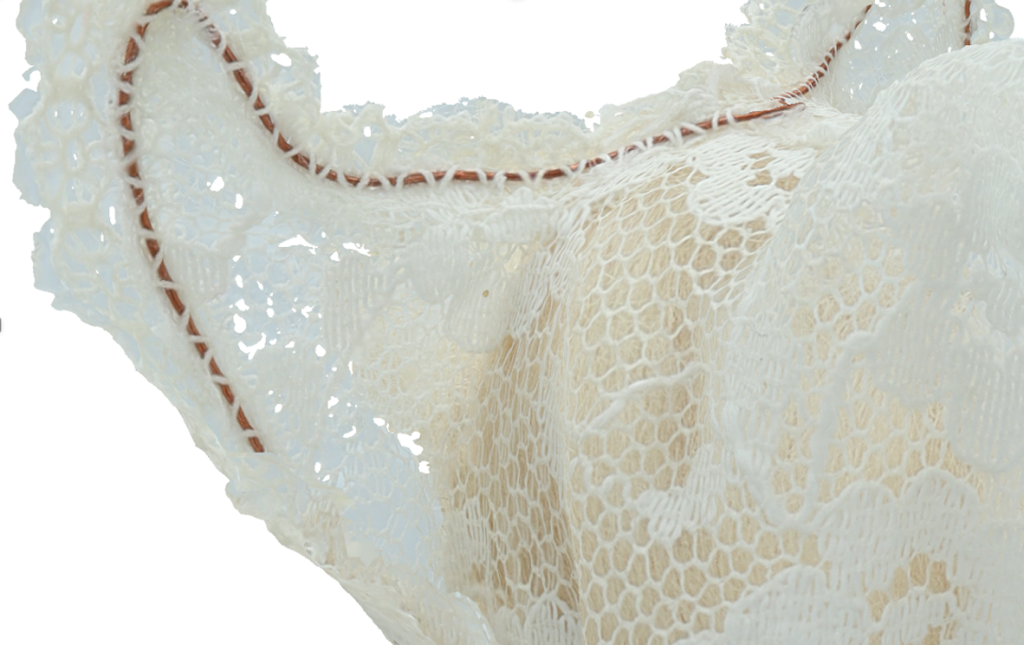

With these new arisen obstacles our left-behind frustration started to build up again. Working in Metashape is not an easy task, but figuring out what went wrong in an unfamiliar program made this even more difficult. Fortunately, we were not left alone with our complications. Together with our tutors, we went back and forth, trying different settings and variables. With their support and the help of some well-formulated internet search queries, we were able to create a higher-quality 3D model in Metashape. All the details we were very happy with, like the lace of the cap, were again clearly visible on our model.
The skin problems that the doll developed in the digitalization process, unfortunately, were still occurring with the higher-resolution model. These problems came back to a similar factor as the first digitalization of the coffee maker. The smooth and mono-colored parts of the doll were not easily transferable into the system and onto the model. By using the ‘smooth model’ tool of Metashape, we were able to smooth out most parts of the skin. In a few places, some misshaping still occurs, but we were able to restrain the incidence. This left us with the model which was then uploaded into Voyager as the center of our narrative.